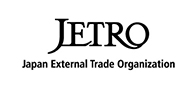Key Findings:
A complete market research report, including forecasts and market estimates, technologies analysis and developments at innovative firms within the Green Technology Industry. Gain vital insights that can help shape strategy for business development, product development and investments.
Key Features:
-
Business trends analysis
-
In-depth industry overview
-
Technology trends analysis
-
Forecasts
-
Spending, investment, and consumption discussions
-
In-depth industry statistics and metrics
-
Industry employment numbers
Additional Key Features Include:
Industry Glossary
Industry Contacts list, including Professional Societies and Industry Associations
Profiles of industry-leading companies
-
U.S. and Global Firms
-
Publicly held, Private and Subsidiaries
-
Executive Contacts
-
Revenues
-
For Public Companies: Detailed Financial Summaries
-
Statistical Tables
Key Questions Answered Include:
-
How is the industry evolving?
-
How is the industry being shaped by new technologies?
-
How is demand growing in emerging markets and mature economies?
-
What is the size of the market now and in the future?
-
What are the financial results of the leading companies?
-
What are the names and titles of top executives?
-
What are the top companies and what are their revenues?
This feature-rich report covers competitive intelligence, market research and business analysis—everything you need to know about the Green Technology Industry.
Plunkett Research Provides Unique Analysis of the Following Major Trends and Technologies Affecting the Green Technology Industry
-
Introduction to the Green Technology and Sustainability Industry
-
Demand for Green Technologies, Sustainability and Conservation Practices Evolves, Fueling Investment and New Product Development
-
Water Conservation Technologies to Enjoy Tremendous Growth/China Targets Desalination
-
Garbage Recycling Flourishes/Plasma Arc Gasification Technology Looks Promising
-
Food Recycling Efforts Underway
-
Biomass, Waste-to-Energy, Waste Methane and Biofuels from Algae
-
Smart Cities Utilize Sensors and Artificial Intelligence (AI)/Create Privacy and Security Issues
-
Packaging Technology Improves/Walmart, Amazon and Coca-Cola Boost Packaging Sustainability
-
Lower Energy Intensity Is a Prime Focus in China/U.S. Achieves Dramatic Energy Intensity Reductions
-
Interest in Geoengineering Grows
-
Environmentalists Campaign for a Greener Chemical Industry
-
Homes and Commercial Buildings Seek Green Certification
-
The Internet of Things (IoT) and M2M to Boom, Enhanced by Artificial Intelligence (AI)/Open New Avenues for Hacking
-
Major Technology Research in Batteries/Massive Investments in Battery Factories and Power Storage
-
Fuel Cell and Hydrogen Power Research Continues/Fuel Cell Cars Enter Market
-
Fuel Efficiency Continues to Improve
-
Electric Cars (EVs) and Plug-in Hybrids (PHEVs) See Massive New Investments by Auto Makers
-
Smart Electric Grid Technologies Are Adopted/Massive Utilities Investment Needed
-
Storage Battery Technologies and Installations Boom Worldwide
-
Superconductivity Provides Advanced Electricity Distribution Technology
-
Electric Utilities Adopt Coal Emissions Scrubbers While the Industry Tests Carbon Capture and Clean Coal Technologies
-
Bio-plastics Become a Reality/Plastic Packaging Made from Corn and Soy
-
New Display Technologies with PLEDs
-
Apparel Manufacturing Goes Green
-
Precision Agriculture Technologies (AgTech), Farm Robotics, GPS and Irrigation Market Grows Worldwide/Hi Tech Greenhouses
-
Natural/Organic Consumer Products Attract Greater Market Share
-
Breakthroughs in Plastic Recycling
-
Green Consumers Push Demand for Recycled and Re-Sale Clothing
Plunkett Research Provides In-Depth Green Technology Industry Statistical Tables & Charts
-
GreenTech Industry Statistics and Market Size Overview
-
Global Alternative Energy Industry Statistics and Market Size Overview
-
Energy Production by Renewable Energy, U.S.: Selected Years, 1955-2022
-
Total Renewable Electricity Net Generation by Source & State, U.S.: 2022
-
Estimated Levelized Cost of Electricity (LCOE) for New Electricity Generation by Energy Source
-
U.S. Renewable Energy Consumption by Energy Source, 2016 vs. 2022
-
Fuel Ethanol Production & Consumption, U.S.: 1990- August 2023
-
Biodiesel Production & Consumption, U.S.: 2002- August 2023
-
Federal R&D Funding by Character of Work and Facilities and Equipment, U.S.: Fiscal Years 2022-2024
-
Federal R&D Budget & Distribution by Agency, U.S.: Fiscal Years 2022-2024
-
U.S. Department of Energy Funding for Science & Energy Programs: 2022-2024
-
Federal R&D & R&D Plant Funding for Energy, U.S.: Fiscal Years 2022-2024
-
Federal R&D & R&D Plant Funding for Basic Research, U.S.: Fiscal Years 2022-2024
-
Federal R&D & R&D Plant Funding for Transportation, U.S.: Fiscal Years 2021-2023
-
Federal R&D & R&D Plant Funding for Agriculture, U.S.: Fiscal Years 2021-2023
-
Federal Funding for Research, by Agency & Field of Science & Engineering, U.S.: Fiscal Year 2022
-
Top 10 Countries by Installed Wind Generating Capacity: 2022
-
Top 15 U.S. States by Installed Wind Generating Capacity: 1st Quarter 2023
















